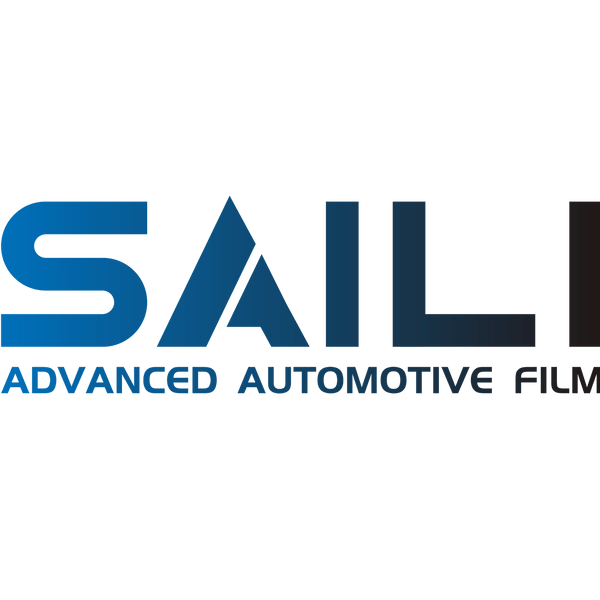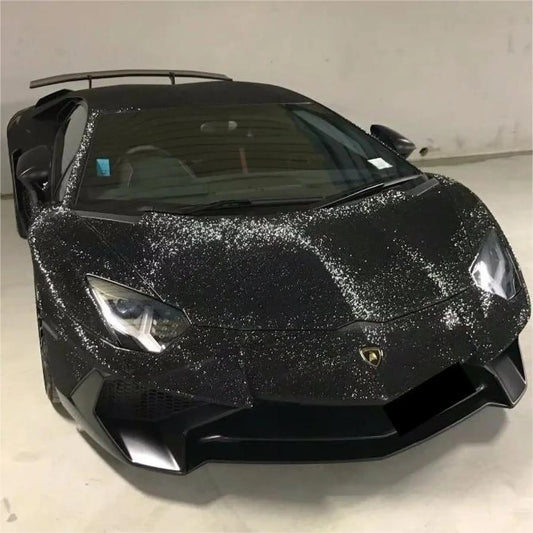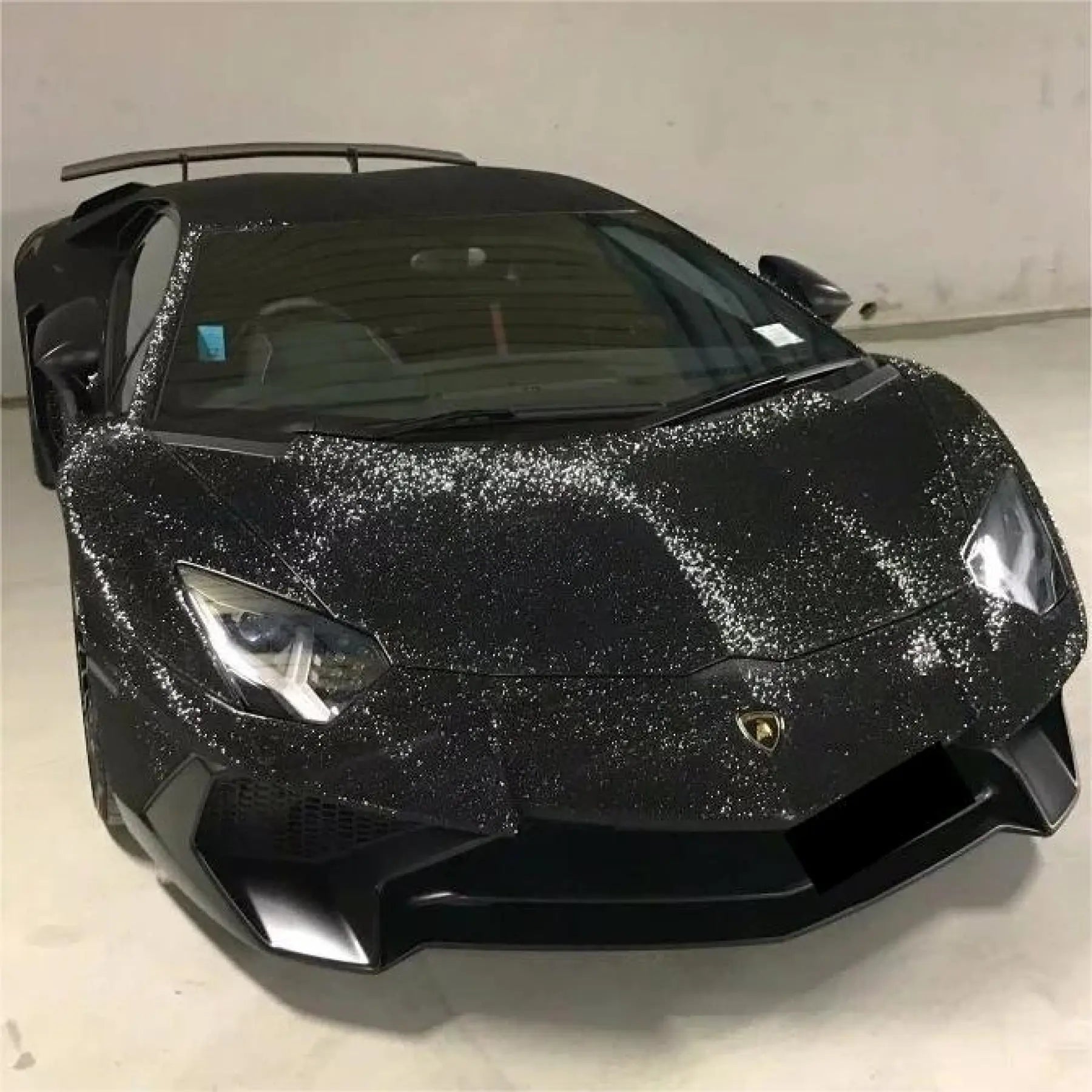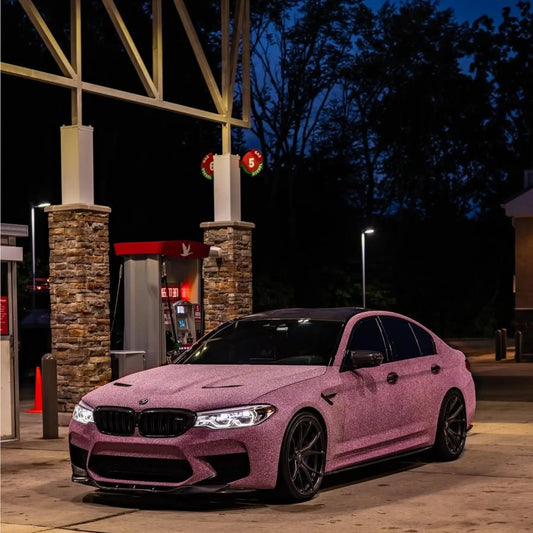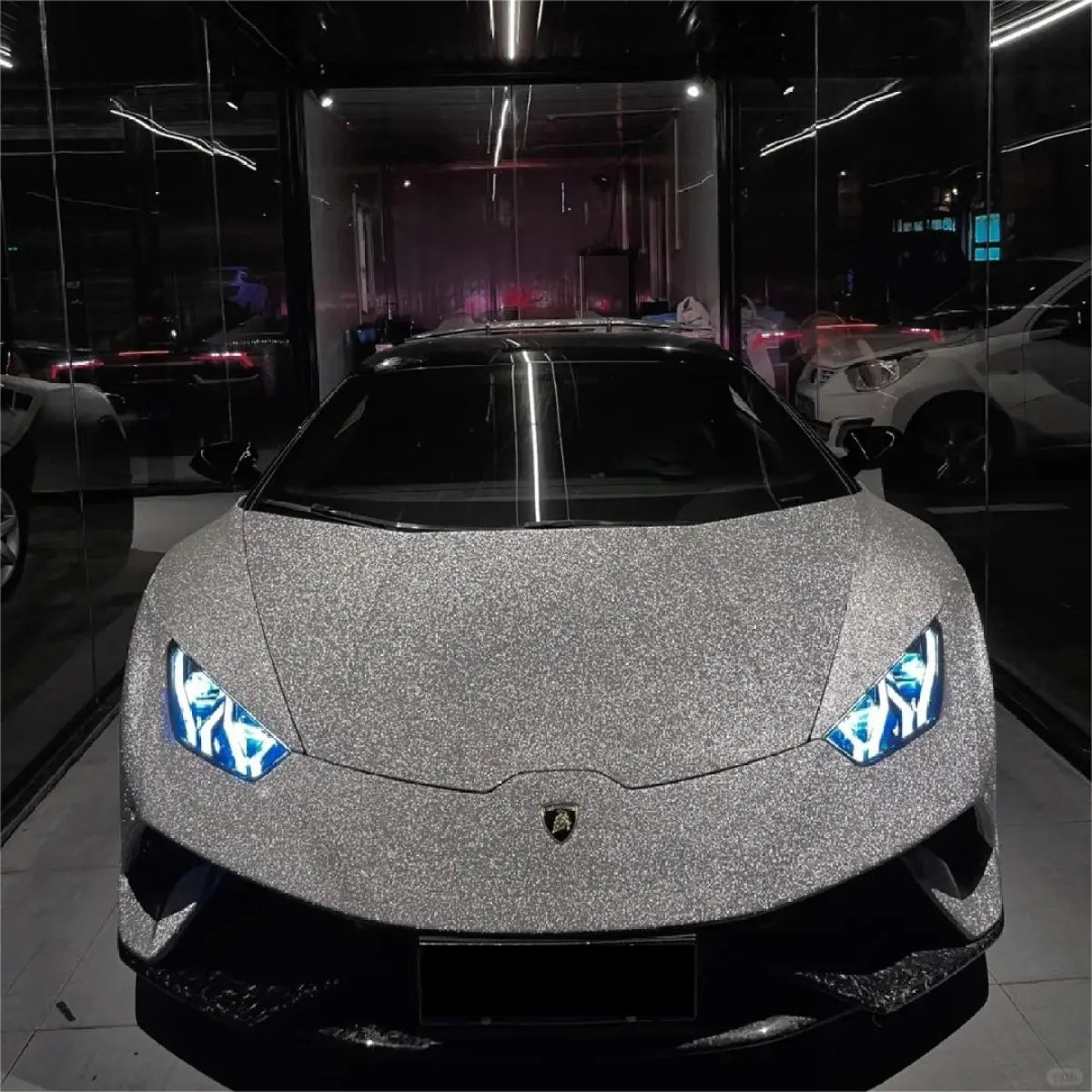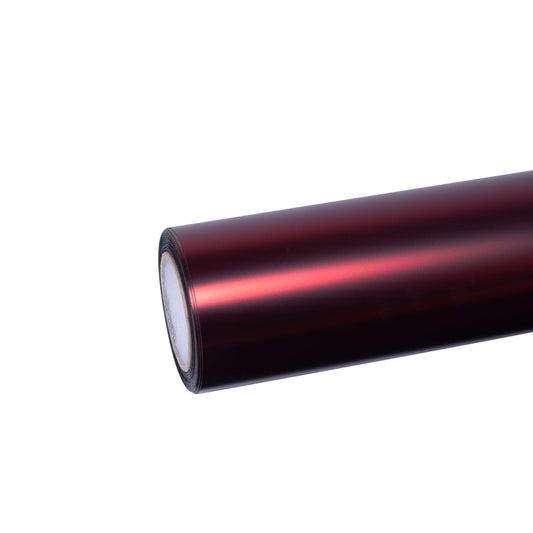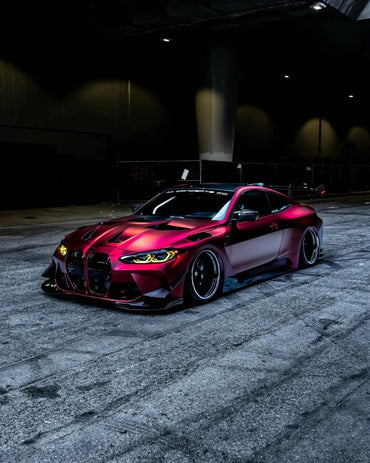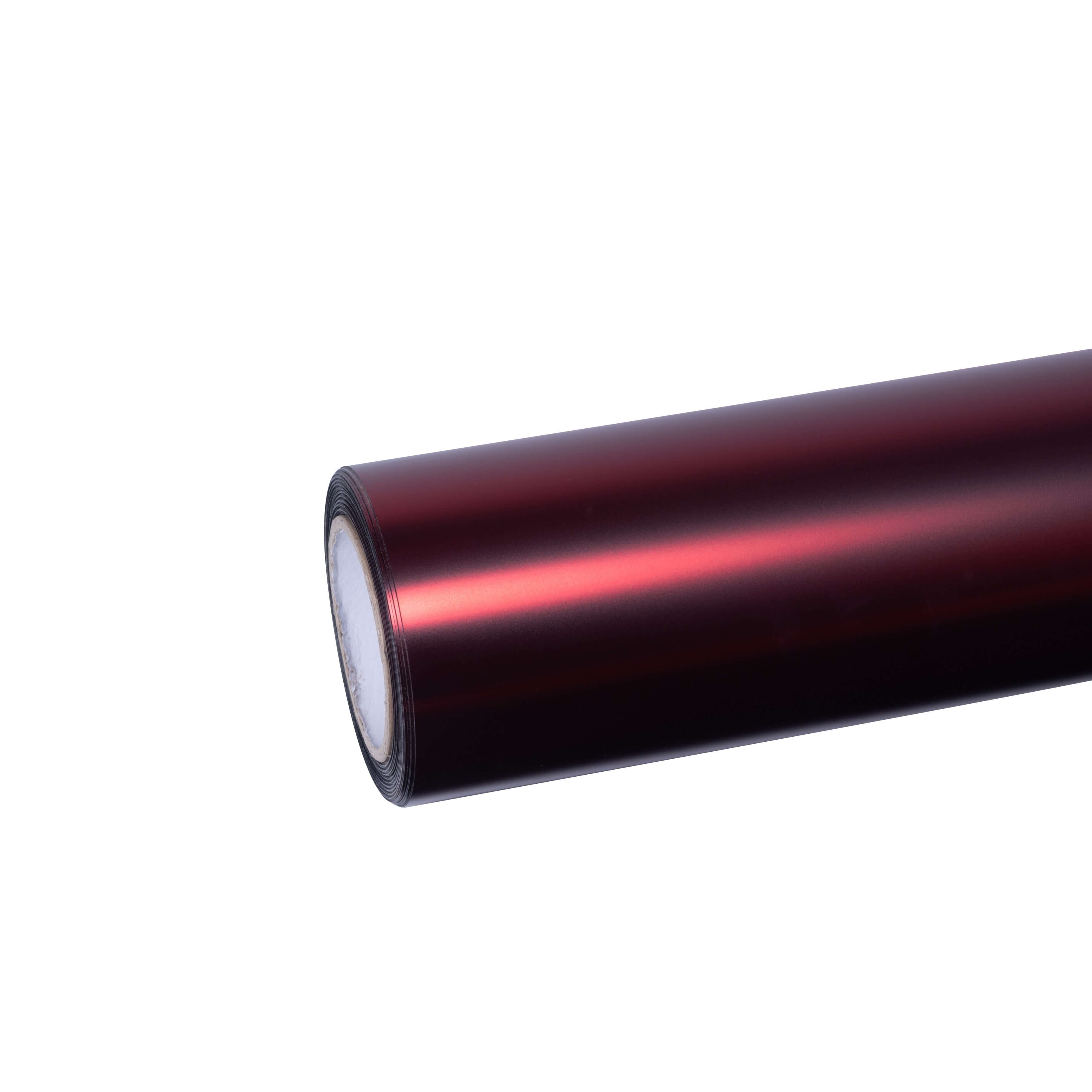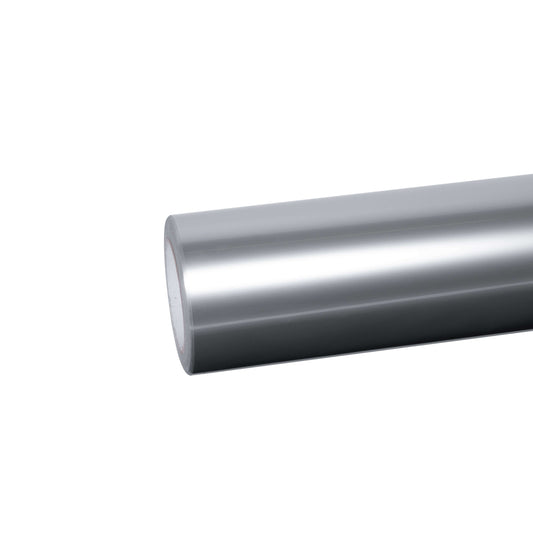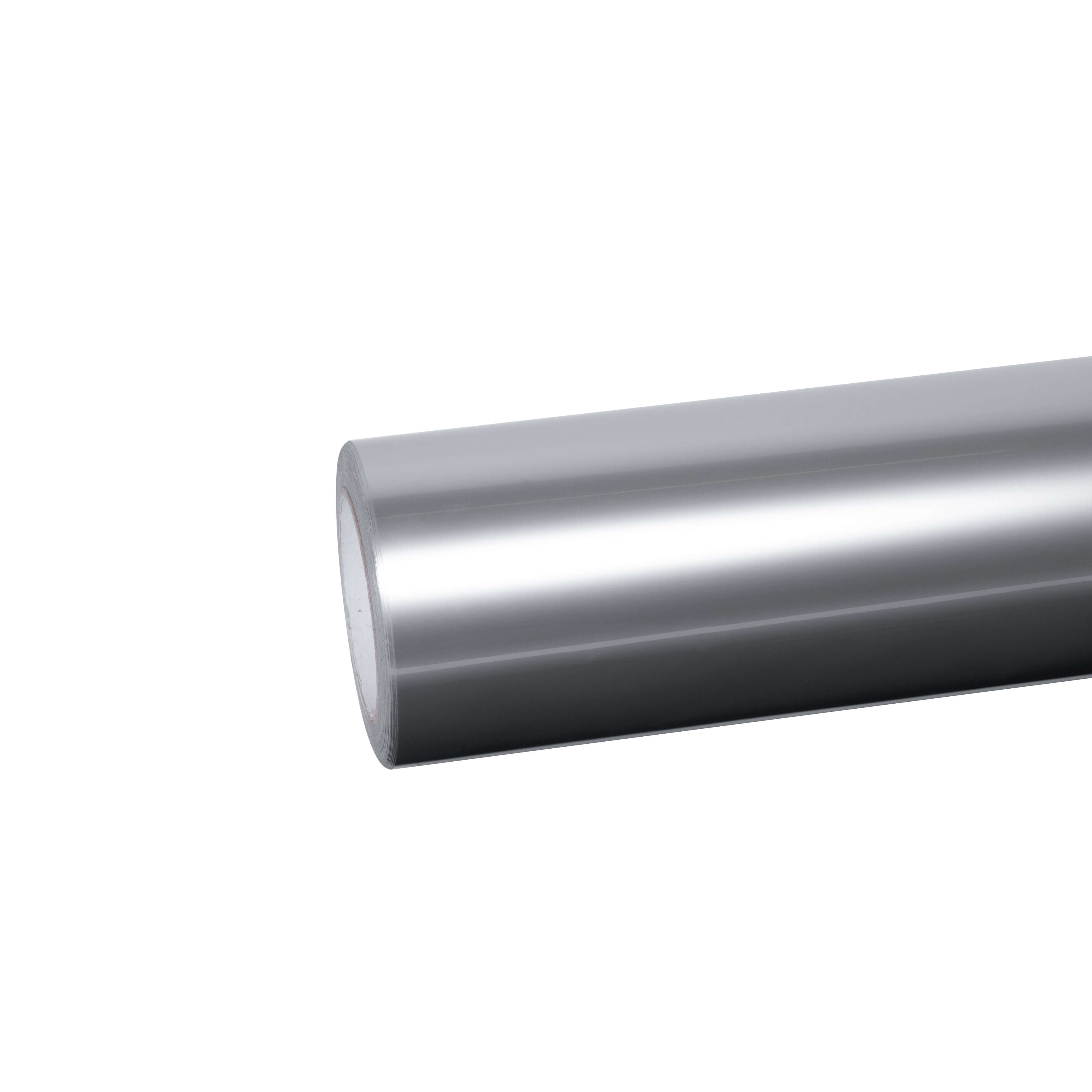Why Modern Vehicles Need Advanced Protection
Your vehicle faces constant threats from road debris, UV radiation, bird droppings, tree sap, and chemical contaminants. Traditional paint alone cannot withstand these environmental hazards indefinitely. The automotive wrap market is experiencing significant growth, with demand increasing approximately 20% annually as vehicle owners recognize the dual benefits of customization and protection .
The integration of 3D carbon fiber wraps with TPU paint protection film creates a comprehensive defense system for your vehicle's exterior while delivering the high-performance aesthetic that turns heads on every street.
Understanding Carbon Fiber Wrap Technology
Carbon fiber wraps provide a three-dimensional textured appearance that mimics authentic carbon fiber at a fraction of the cost of genuine composite materials . Unlike flat vinyl films, premium carbon fiber wraps feature realistic weave patterns that create visual depth and tactile authenticity.
Types of Carbon Fiber Finishes
Different carbon fiber textures serve various aesthetic preferences:
3D Carbon Fiber: Features a shallow weave pattern suitable for subtle enhancement. The 3D carbon fiber collection offers versatile options for hoods, roofs, mirrors, and interior trim applications.
Gloss Carbon Fiber: Delivers a wet-look finish with high reflectivity, perfect for luxury and sports vehicles seeking a showroom-quality appearance.
Matte Carbon Fiber: Provides an understated, sophisticated finish that reduces glare while maintaining the distinctive carbon fiber texture.
Forged Carbon Fiber: Showcases a random, irregular weave pattern that creates a unique, high-tech appearance with no two installations looking identical.
Paint Protection Film: The Invisible Shield
Modern TPU-based paint protection films offer self-healing technology that repairs minor scratches through heat activation, hydrophobic properties that repel water and contaminants, and warranties extending up to 10 years .
The colored paint protection film options available today transform PPF from a purely protective solution into a styling element. These films provide comprehensive defense against:
- Rock chips and road debris impact
- Scratches from automated car washes
- UV radiation that causes fading and oxidation
- Chemical staining from bird droppings and tree sap
- Swirl marks from improper cleaning techniques
According to Wikipedia's article on paint protection film, these thermoplastic urethane films were originally developed for military applications to protect helicopter rotor blades from debris damage, demonstrating their exceptional durability credentials.
The Synergy: Why Combine Carbon Fiber and PPF
Layering carbon fiber wraps with paint protection film creates a multi-functional coating system that delivers benefits neither solution can achieve alone.
Enhanced Durability
Carbon fiber PPF acts as a barrier against scratches, road debris, UV rays, and acidic contaminants while maintaining the visual appeal of carbon fiber texture TERMINAX. This combination extends the lifespan of your vehicle's appearance dramatically compared to either solution used independently.
Self-Healing Technology
When minor abrasions occur on the surface, the thermoplastic urethane top layer responds to heat exposure by reforming its molecular structure, effectively erasing light scratches without intervention. This technology keeps your ultra matte wrap or carbon fiber finish looking pristine for years.
Hydrophobic Properties
The protective film's water-repellent surface causes liquids to bead and roll off easily, reducing water spotting and simplifying maintenance. This characteristic makes cleaning your metallic vinyl wrap or carbon fiber installation significantly easier.
UV Stability
Premium TPU wraps include UV stabilizers that prevent discoloration and preserve color accuracy over extended periods TERMINAX, ensuring your investment maintains its visual impact throughout its service life.
2025 Color and Finish Trends
The automotive customization landscape in 2025 emphasizes iridescent finishes, color-shifting films, jewel tones, and sophisticated earth-inspired palettes . These trends reflect broader cultural movements toward personalization and self-expression through vehicle aesthetics.
Iridescent and Chameleon Effects
Color-shift PPFs with specialized pigments that refract light create dynamic effects, with films shifting between purple, blue, and green depending on viewing angle . The rainbow laser vinyl wrap collection captures this trend perfectly, offering dramatic visual impact for enthusiasts who want their vehicles to stand out.
Liquid Chrome and Metallic Finishes
The liquid chrome wrap category delivers mirror-like reflectivity that creates futuristic, attention-grabbing appearances. These finishes work exceptionally well when combined with protective film layers that preserve their brilliant luster.
Dual-Color Combinations
Bold graphic wraps and dual-color schemes allow for complete customization and one-of-a-kind vehicle appearances . The dual color dream vinyl wrap options enable creative expression while maintaining protective functionality.
Installation Considerations for Maximum Longevity
Professional installation significantly impacts the performance and lifespan of combined carbon fiber and PPF systems. Proper surface preparation, environmental control, and application technique determine whether your investment delivers five years or ten years of service.
Surface Preparation
The foundation of any successful wrap installation begins with immaculate surface preparation. Any contaminants, wax residue, or imperfections trapped beneath the film will compromise adhesion and appearance. Professional installers use specialized degreasing solutions and alcohol-based cleaners to achieve optimal bonding.
Environmental Control
Temperature and humidity dramatically affect installation outcomes. Professional facilities maintain controlled environments between 65-75°F with moderate humidity levels that allow proper adhesive activation without premature curing.
Professional vs. DIY Installation
While sample kits allow enthusiasts to test materials and colors, full vehicle installations require professional expertise for several reasons:
- Proper tension management prevents premature failure
- Heat application techniques ensure molecular bonding
- Edge sealing prevents moisture intrusion
- Proper post-heating stabilizes the installation
Professional installers also possess the wrapping tools necessary for flawless results, including infrared thermometers, specialized squeegees, and precision cutting implements.
Maintenance Protocols for Extended Lifespan
Following proper care instructions allows TPU paint protection films to exceed their expected 10-year lifespan. Establishing appropriate maintenance routines immediately after installation protects your investment.
Washing Guidelines
Hand washing with pH-neutral automotive shampoos provides the safest cleaning method. Avoid automated car washes with harsh brushes that can damage film edges. Touchless car washes offer acceptable alternatives when hand washing is impractical.
Drying Techniques
Use microfiber drying towels with gentle blotting motions rather than aggressive rubbing. Forced air drying systems eliminate water spotting concerns while preventing mechanical damage.
Contamination Removal
Address bird droppings, tree sap, and insect residue promptly using dedicated removal products. These biological contaminants contain acids that can etch through protective coatings if allowed to remain on surfaces.
Periodic Inspections
Examine film edges quarterly for lifting or contamination accumulation. Early detection of edge lifting allows for simple reactivation before more extensive damage occurs.
Cost Analysis: Investment vs. Value
The combined investment in carbon fiber wrapping and paint protection film represents substantial upfront costs, typically ranging from $3,000 to $8,000 for full vehicle coverage depending on vehicle size and material selection. However, this expense must be evaluated against the alternatives and long-term benefits.
Comparison to Traditional Paint
Custom paint jobs requiring similar visual impact cost $10,000 to $25,000 and offer no reversibility. Paint protection on custom finishes adds another $2,000 to $5,000, creating total expenses that dwarf wrap solutions.
Resale Value Protection
Vehicles with original factory paint preserved beneath removable wrap films command premium resale prices. Dealerships and private buyers value the ability to return vehicles to factory appearance, often paying $2,000 to $5,000 more for well-maintained wrapped vehicles.
Longevity Economics
Quality carbon fiber wraps with proper care last 3-5 years for standard vinyl, while premium TPU-based carbon fiber PPF can last up to 10 years . When calculated on an annual basis, the investment becomes remarkably economical compared to ongoing paint maintenance and correction.
Popular Applications and Vehicle Types
Different vehicle categories benefit from specific wrap and protection strategies based on their typical use cases and exposure patterns.
Sports and Luxury Vehicles
High-performance vehicles benefit tremendously from crystal vinyl wrap and carbon fiber combinations that enhance their aggressive styling while protecting paint finishes that cost thousands to repair.
Daily Drivers
Practical protection takes priority for vehicles facing daily commute exposure. Full TPU paint protection wrap coverage with strategic carbon fiber accents delivers maximum defense with tasteful aesthetic enhancement.
Classic and Collector Vehicles
Preserving original paint on vintage automobiles while adding modern protection represents a primary concern for collectors. Clear PPF with subtle carbon fiber accent pieces protects vulnerable areas without altering the vehicle's authentic appearance.
Commercial Fleet Vehicles
Business vehicles benefit from glitter sparkle car wrap options that create memorable branding while protecting company assets from depreciation-accelerating paint damage.
Emerging Technologies and Future Developments
The automotive protection industry continues evolving with innovations that will shape the next generation of vehicle customization and preservation solutions.
Smart Films with Embedded Technology
Research into films with embedded sensors for damage detection and performance monitoring represents the cutting edge of protection technology. These developments may allow real-time awareness of impact events and protection system integrity.
Enhanced Self-Healing Capabilities
Advanced polymer formulations featuring improved self-healing properties that repair more significant damage automatically when exposed to heat or sunlight are under development, potentially eliminating minor repair needs entirely.
Sustainable Material Innovation
Environmental consciousness drives development of bio-based TPU formulations and recyclable film materials that deliver equivalent performance with reduced ecological impact. These advancements align with broader automotive industry sustainability initiatives.
Nanotechnology Integration
Nano-coating technologies that enhance hydrophobic properties, stain resistance, and UV protection at the molecular level promise to extend protective capabilities beyond current limitations.
Choosing the Right Protection System
Selecting appropriate wrap and protection combinations requires careful consideration of multiple factors that influence both immediate results and long-term satisfaction.
Lifestyle and Usage Patterns
Daily mileage, parking exposure, climate conditions, and cleaning frequency all impact material selection. Vehicles facing harsh environmental conditions benefit from maximum protection specifications, while garage-kept weekend vehicles may prioritize aesthetics over extreme durability.
Aesthetic Goals
Personal style preferences spanning from sleek matte finishes to bold gloss colors or original creative designs drive material selection. The best sellers collection showcases the most popular choices that balance protection and appearance.
Budget Considerations
Protection levels can be scaled to match financial constraints. Partial coverage on high-impact areas like front bumpers, hoods, and door edges delivers substantial protection at reduced cost compared to full vehicle coverage.
Professional Consultation
Experienced installers provide invaluable guidance on material selection, coverage areas, and realistic outcome expectations based on thousands of completed installations. Their expertise prevents costly mistakes and ensures satisfaction.
The Bottom Line: Comprehensive Protection Pays
Vinyl wraps and paint protection films provide practical benefits including scratch resistance, UV defense, and enhanced resale value while delivering stunning visual transformations. The combination of carbon fiber aesthetics with TPU paint protection technology represents the most sophisticated approach to automotive surface treatment available today.
Whether you're protecting a high-value luxury vehicle, customizing a sports car, or preserving a classic automobile, the synergy between car vinyl wrap materials and protective films delivers unmatched results. This integrated approach ensures your vehicle maintains showroom appearance for years while expressing your personal style.
The investment in quality materials, professional installation, and proper maintenance creates lasting value that far exceeds the initial costs. As the automotive customization industry continues growing and innovating, the combination of carbon fiber wraps with paint protection film will remain the gold standard for vehicle preservation and personalization.
For more information on automotive protection solutions and industry standards, visit the International Window Film Association or explore resources at SEMA (Specialty Equipment Market Association).
Understanding TPU vs PVC Films
Carbon Fiber Accent Applications
